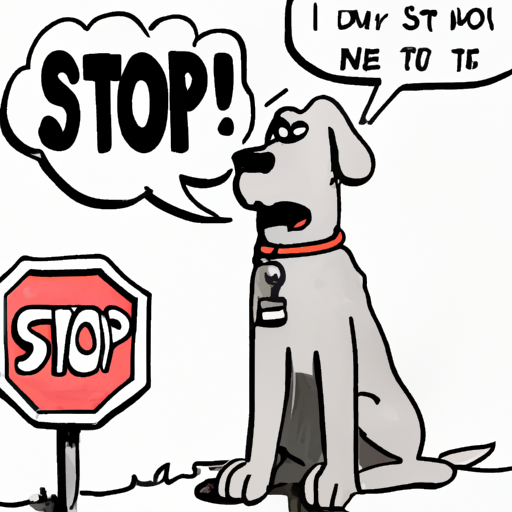Introduction
Hello, dear caregiver, as the devoted caretaker of your four-legged friend, you may have faced a scenario where your dog’s incessant barking becomes a challenge to manage. Barking is a natural form of communication for dogs, but when it becomes excessive, it can create an unpleasant environment for everyone involved. This guide will provide you with comprehensive strategies on how to stop your dog from barking.
Understanding Why Dogs Bark
Before you can effectively address your dog’s barking, it’s important to understand why they bark. Dogs bark for a variety of reasons:
- Alert/Warning: It’s natural for a dog to bark when someone is at the door or when strangers pass the house.
- Anxiety: Dogs suffering from separation anxiety often bark excessively when left alone.
- Boredom: Dogs left alone for long periods or not getting enough physical and mental stimulation may bark out of boredom.
- Seeking Attention: Some dogs bark at people or other animals to gain attention or rewards, like food or toys.
Techniques to Stop Your Dog from Barking
Remove or Modify the Barking Trigger
If you know what triggers your dog’s barking, you can remove or modify the situation. For example, if they bark at people walking by the window, close the blinds or move the dog to another room when you’re not home.
Use Positive Reinforcement
Reward your dog for being quiet. When your dog stops barking on their own, say “quiet” in a calm, firm voice, and then give them a treat or a toy as a reward. This technique can work wonders over time.
Distract Your Dog
Try to get your dog’s attention with a clap or whistle. Once they’ve stopped barking, redirect their attention to something productive and rewarding such as a toy or treat.
Professional Help
If the barking continues to be a problem, consider seeking help from a professional dog trainer or behaviorist.
Training Tools for Barking Dogs
There are several tools available to assist you in training your dog to bark less.
- Citronella Spray Collar: This collar releases a harmless citronella spray when your dog barks, distracting them and stopping the barking.
- Ultrasonic Devices: These emit a high-frequency sound when your dog barks. The sound is unpleasant to dogs, but not harmful.
- Vibration Collars: These collars vibrate when your dog barks, which distracts them and stops the barking.
| Training Tool | Purpose |
|---|---|
| Citronella Spray Collar | Distract with harmless spray |
| Ultrasonic Device | Emit unpleasant high-frequency sound |
| Vibration Collar | Distract with vibration |
Health-Related Barking
In some cases, excessive barking may be related to health issues. If your dog’s barking is accompanied by other symptoms such as loss of appetite, lethargy, or changes in behavior, it might be time to consult a vet.
Consistency is Key
Remember, the key to successful training is consistency. Make sure all family members and visitors understand the training program and stick to it.
FAQ
Q: What should I avoid when training my dog not to bark?
A: Avoid shouting at your dog to stop barking, this can often make the barking worse. Also, avoid physical punishment as it can lead to fear and anxiety, which can exacerbate the problem.
Q: How long will it take to train my dog not to bark?
A: This can depend greatly on the individual dog and the reason for the barking. It can take anywhere from a few weeks to several months.
Q: Can I use a bark collar on a puppy?
A: Most experts recommend against using bark collars on puppies under six months of age.
Q: Is my dog’s barking a sign of a health problem?
A: Excessive barking can sometimes be a sign of a health problem. If your dog’s barking is accompanied by other symptoms, it’s best to consult a vet.
Remember, your canine companion looks up to you for guidance. With patience, consistency, and love, you can help shape their behavior for a happier, quieter home life.



